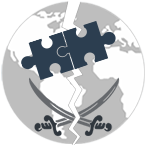The NEFA Foundation has posted a court filing by federal prosecutors which provides further detail on the Palestine Committee of the U.S. Muslim Brotherhood. According to the document:
By the outbreak of the First Intifada, the Muslim Brotherhood in the United States was significant and well organized. In 1987, the governing body of the International Muslim Brotherhood decided to focus its mission on the Palestinian issue, and directed that Palestine Committees be formed in countries throughout the world. In the United States, the Palestine Committee was comprised of active Muslim Brotherhood members of Palestinian origin. The leader of the Palestinian Committee in the United States at that time was unindicted co-conspirator Mousa Abu Marzook. Marzook is now – and has been since 1995 – a Specially Designated Terrorist and Hamas leader. In fact, in the early 1990s, Marzook left his post as a leader of the United States-based Muslim Brotherhood and Palestinian Committee to take over as Hamas’ Political Bureau Chief, the organization’s highest official position. The creation and growth of the Palestine Committee in the United States are evidenced in part by documents that the government seized in 2004 from the Virginia home of unindicted co-conspirator and Palestinian Committee member Ismail Elbarasse. As shown by those documents and other evidence, the Muslim Brotherhood directed its Palestinian Committees throughout the world, including the United States, to carry out the mandate of assisting Sheik Yassin and his newly-formed Hamas Movement. In accordance with that mandate, the Palestinian Committee in the United States, which included the defendants Elashi, Baker and El-Mezain, oversaw a number of sub- organizations charged with varying missions calculated to comprehensively address Hamas’ needs. These organizations included the United Association for Studies and Research (UASR) (“think tank”), the Islamic Association of Palestine (IAP) (propaganda and information) and the Occupied Land Fund (OLF) (money), later to become the defendant HLF. The defendant Shukri Abu Baker was in charge of the HLF and, along with the defendants El-Mezain and Elashi, set out to establish what would become the highest grossing Islamic charity in the United States.
It should be noted that the Council on American Islamic Relations (CAIR) grew directly out of the IAP and Hamas infrastructure in the U.S.
The new court document also summarizes the 1993 meeting in Philadelphia attended by many members of the Brotherhood Palestine Committee and IAP including the future leaders of CAIR:
During the meeting, the participants openly discussed the problems that the Oslo Accords posed for achieving their objectives and strategized about how best to defeat the peace process. The United States was fertile ground for fundraising and propaganda, offering the essential Constitutional protections which afforded the freedom to operate. Since the United States had publicly positioned itself behind the peace process, the attendees were concerned that disclosure of their true purpose would threaten their established infrastructure by aligning them with what they knew was a terrorist organization. Attendees were admonished not to mention “Hamas, ” but rather to refer to it as “Samah, ” which is Hamas spelled backwards. Attendees questioned how they could continue their quest to defeat the peace process without being viewed as “terrorists. ” They discussed their concern that the peace process would attract Palestinian support and further complicate their ultimate goal of creating an Islamic state throughout Israel. They agreed that they must operate under an ostensible banner of apolitical humanitarian exercise in order to continue supporting Hamas’ vital social recruitment effort. In order to facilitate their continued support of Hamas, the attendees discussed the method by which they could provide financial support without an overt alignment with Hamas. That method involved supporting institutions, organizations and programs in the West Bank and Gaza aligned with the Hamas movement. Attendees identified several organizations and zakat committees as “ours.” The infiltration and control of social committees and organizations providing much needed relief in the West Bank and Gaza provided a perfect opportunity for Hamas to widen and strengthen its grip on the Palestinian population.
The meeting was secretly taped by the FBI. For a report on the 1993 meeting, go here.
